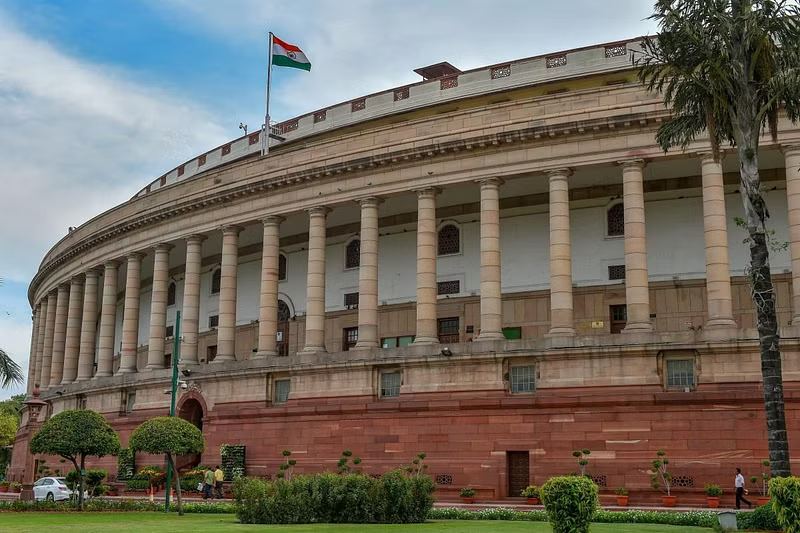On Thursday, ahead of the eagerly awaited general elections in India, the country will unveil its interim budget for 2024.
During an election year, the interim budget is intended to serve as a stopgap measure to cover short-term financial obligations until a new government is formed. Finance Minister Nirmala Sitharaman is scheduled to submit it.
The comprehensive union budget for the upcoming fiscal year, which runs from April 1, 2024, to March 31, 2025, won’t be made public until after the elections, which are scheduled for April and May.
Large-scale policy changes are usually not included in the interim budget.
However, Nomura noted in a client note that this interim budget is still significant since it may provide insight into the final budget, given that many observers anticipate that the ruling Bharatiya Janata Party would win this election.
The bank’s economists predicted that the interim budget will be a political statement since “the government is in election mode and thus there will be tacit targeting of its key constituents.”
These are the main conclusions that analysts anticipate.
Target for the fiscal deficit
For the fiscal year 2022–2023, India’s revised projection of its budget deficit was 6.4% of GDP. For the fiscal year 2023–2024, the administration has stated that it wants to reduce it by 50 basis points, to 5.9%.
Nomura and BofA Global Research economists predict that in the fiscal year 2024–2025, the deficit will stabilize at 5.3%.
“Will the administration achieve the FY24 target of a budget deficit of 5.9% of GDP? Indeed, Goldman Sachs analysts stated in a statement that the deficit might possibly drop to 5.8% if spending were restrained in the coming quarter.
Additionally, Goldman anticipates increased spending on significant subsidies, such as the program for rural employment.
The government must, according to Nilesh Shah, managing director of Kotak Mahindra Asset Management, strive to accomplish its divestiture goals by the end of the current quarter in March.
To help reach its fiscal deficit target, the government must increase divestment targets through the sale of state-run businesses.
“There is a reasonably good balancing required to meet 5.9% unless the central government picks up the divestment receipts in the next two months,” Shah said.
In a phone conversation, Shah stated, “My impression is that there is reasonably good balancing required to meet 5.9% unless the central government picks up the divestment receipts in the next two months.”
It is reported that India will fail to meet its divestiture goals for the fifth year in a row.
Investing in capital
According to Goldman Sachs, by 2075, India’s economy will overtake all others as the second largest in the world.
India’s economy currently ranks fifth in the world, behind that of the United States, China, Japan, and Germany.
India will need to develop greater road and rail connectivity as well as upgrade its infrastructure if it hopes to surpass the other nations and overtake China as the second-largest economy.
Kranthi Bathini, an equity strategist at WealthMills Securities, stated, “The focus towards infrastructure is paramount, and that includes healthcare and education too,” adding that agriculture and renewable energy are also high on the agenda.
The government declared during the annual budget of the previous year that it would increase infrastructure investment by 33% to 10 trillion rupees ($122.29 billion).
According to Nomura, the government would raise capital spending by nearly 16.5% in fiscal year 2025–2026 and by about 36% in fiscal year 2024–2025. It should be noted that this will maintain capital investment by the central government at 3.4% of GDP.
“The focus on public capex has been a deliberate policy choice by the government to address India’s considerable infrastructure deficit and a substitute for lacklustre private capex in the hope that the latter will be eventually ‘crowded in,’” Nomura said.
India’s Finance Ministry stated on Monday that the country, with a $5 trillion gross domestic product, is expected to rank third in the world’s economies by 2027. Additionally, the finance ministry predicted that in the fiscal year 2024, the GDP would rise by 7% or more.
Taxes
As an interim budget, don’t expect major changes in taxation, according to economists.
For those anticipating this budget, the introduction of tax perks like tax credits or exemptions for investments will be crucial.
According to Goldman Sachs, corporate and income taxes will increase by 15% year on average.
The Investment Bank also estimated that given the collection of goods and services tax grew at a healthy pace, indirect taxes may increase by 11% on an annual basis during the fiscal year 2024–2025.
“Since the elections are coming up, these kinds of announcements can come in this budget,” Bathini explained, adding that there will also be a greater emphasis on rural development.
What comes next?
The Modi government’s chances of being reelected for a third term will be determined by the results of the April and May general elections in India. India’s financial markets have so far gained due to optimism that the country’s ruling BJP will win again and that policy will remain unchanged.
After setting multiple records, the benchmark Nifty 50 index for India crossed 22,000 points in mid-January.
The benchmark lending repo rate set by the Reserve Bank of India is 6.5%.
The timing of a change in the RBI’s policy orientation is the next, according to DBS senior economist Radhika Rao.
Rao anticipates that the Indian central bank will continue its current monetary policy through June, at which point it will begin to reduce interest rates. The central bank will be closely monitoring the actions of the U.S. Federal Reserve throughout this period.
Reduced lending rates frequently increase liquidity and encourage a risk-taking attitude in the stock market.


